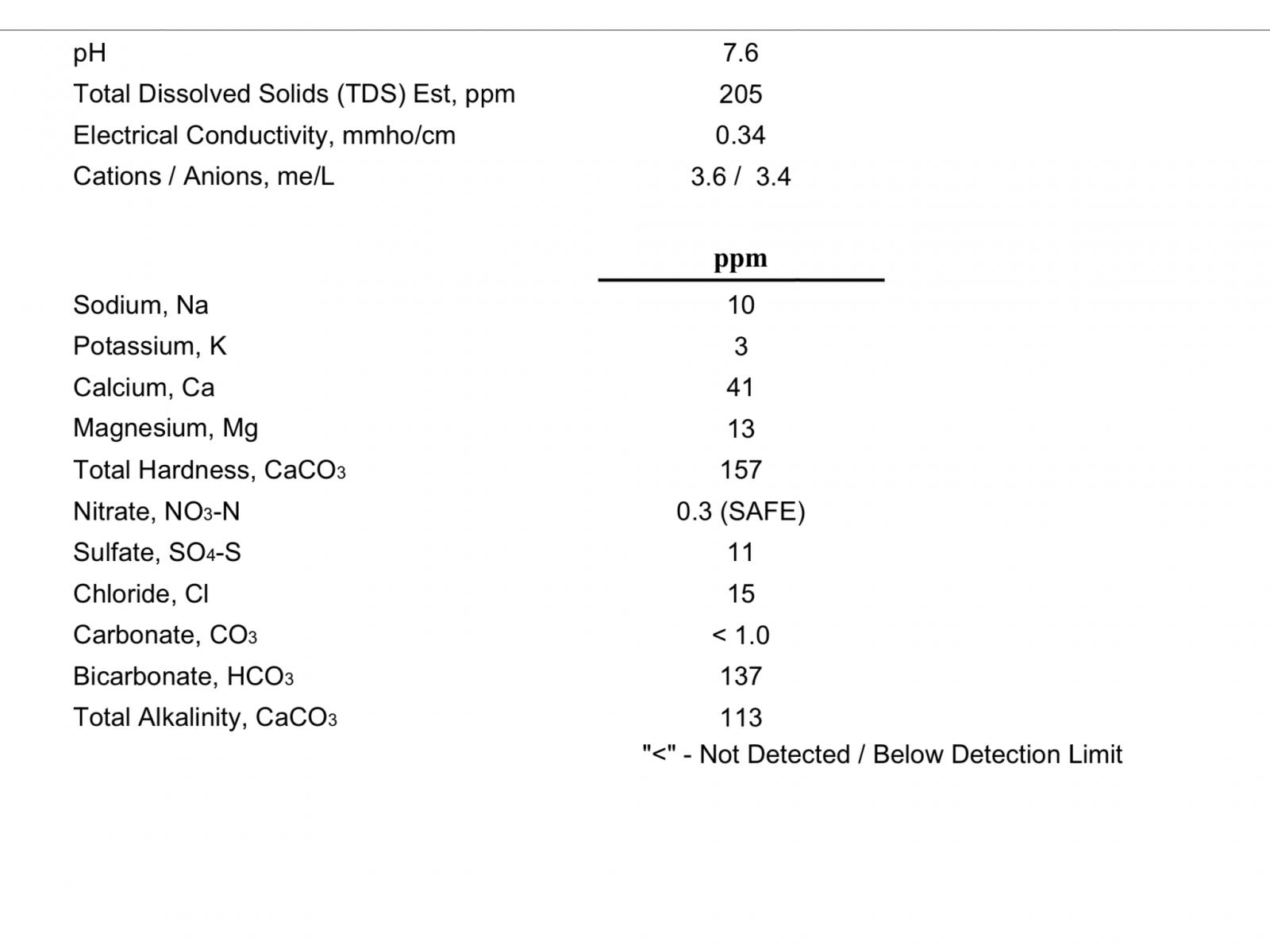Any general comments or advice ?




Any general comments or advice ?
Very good source of water. Almost a blank slate, makes it very easy to tweak. You have low Sodium, very low sulfate and chloride, decent calcium (you will need ~50-100 for yeast health and flocculation) - and alkalinity is moderate but not superhigh. So you can easily use your water (run through carbon filter to remove chlorine) and then add gypsum/CaCl2 to balance Sulfate vs. Chloride, and add a bit more Ca. Then you may adjust pH depending on your water treatment and grainbill/type of beer.
You can make pretty much anything with this water and gypsum and CaCl2 additions, except maybe pilsners, for which you may need to cut your water with RO a bit.
Thanks for the reply..I really appreciate it. I've been using the city water report off their website for a couple years and finally decided to get the lab report just to see if there was a difference. It was pretty close...worth the $35 to know.
I use Brewers friend and find that I can't get my mash PH in range without cutting 50-75% RO for Pales, ipa's, blondes. I usually still need to add CaCl2 and gypsum as well as a lactic acid. Without the RO I would frequently be above 4 or 5% of the equiv acid malt which I've generally read is something to stay below.
I've always thought it was shame to have to hassle with RO given a relatively blank slate tap water....am I missing something?
Lactic acid adds flavor and sauermalz adds that flavor plus its own malt flavors which can be a plus in some kinds of beers (lagers) but not others so it really depends on personal taste. I rather like it. Sadu doesn't. There it is.
Enter your email address to join: